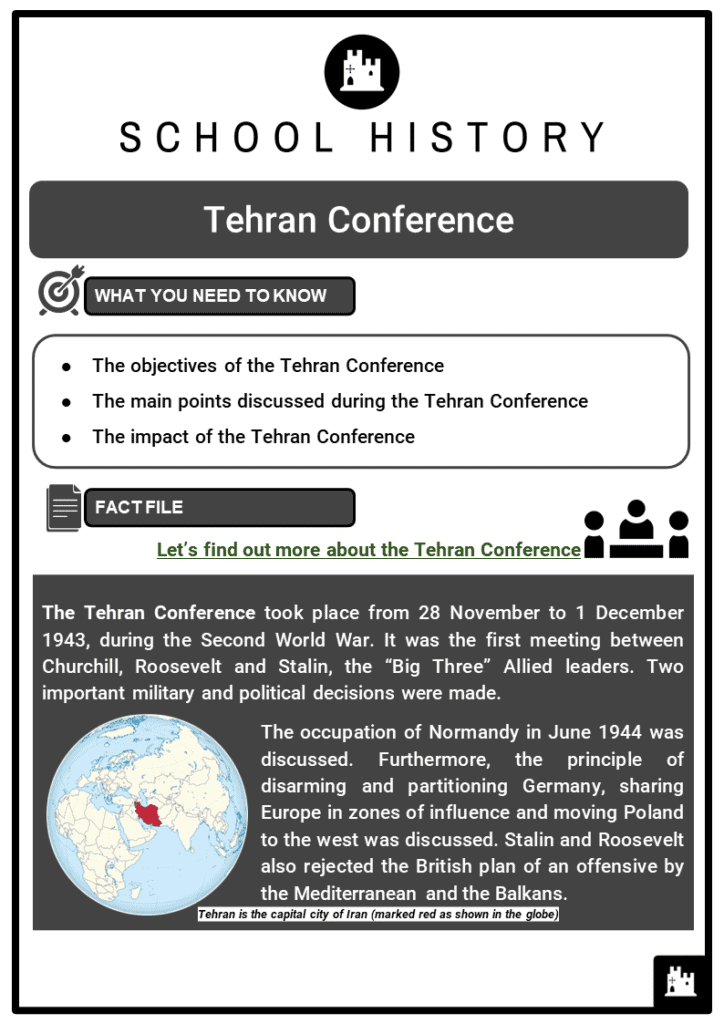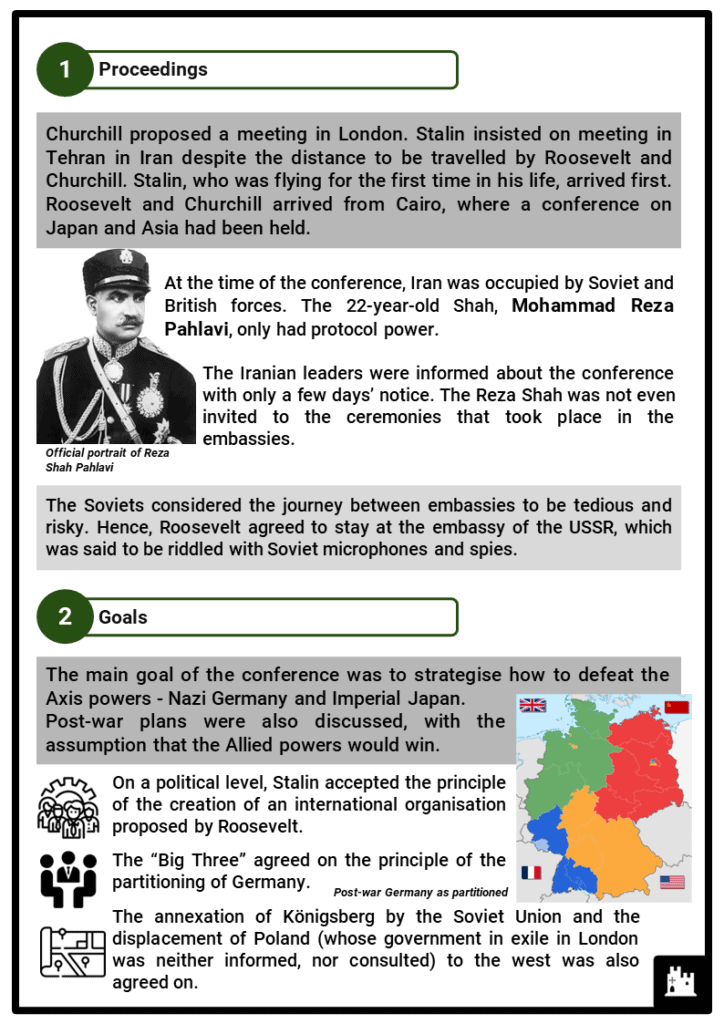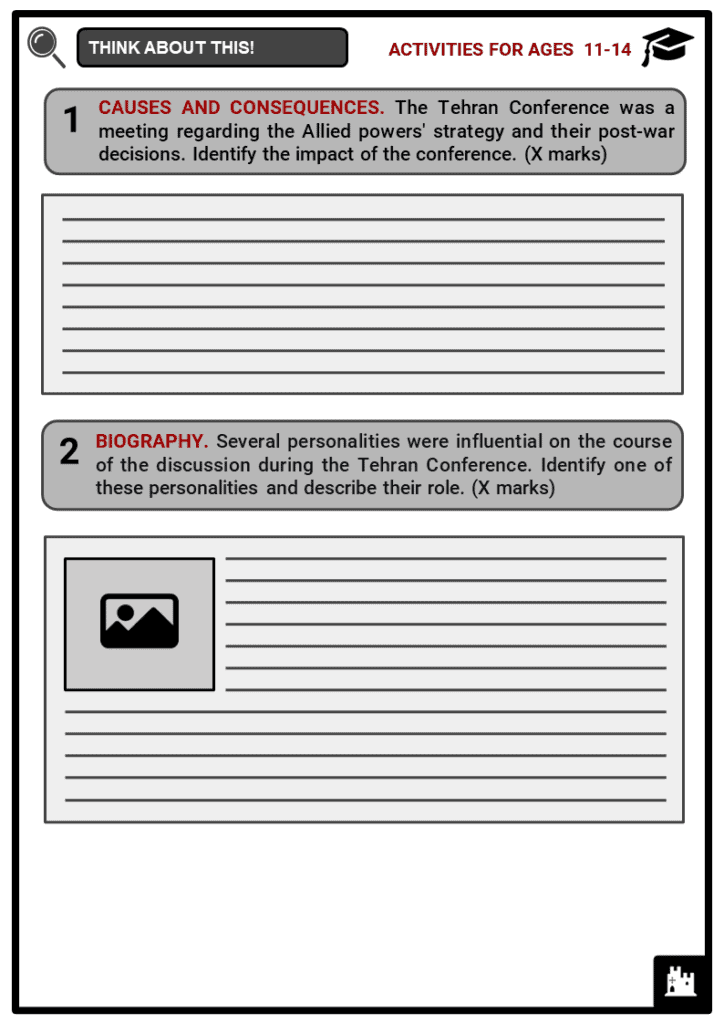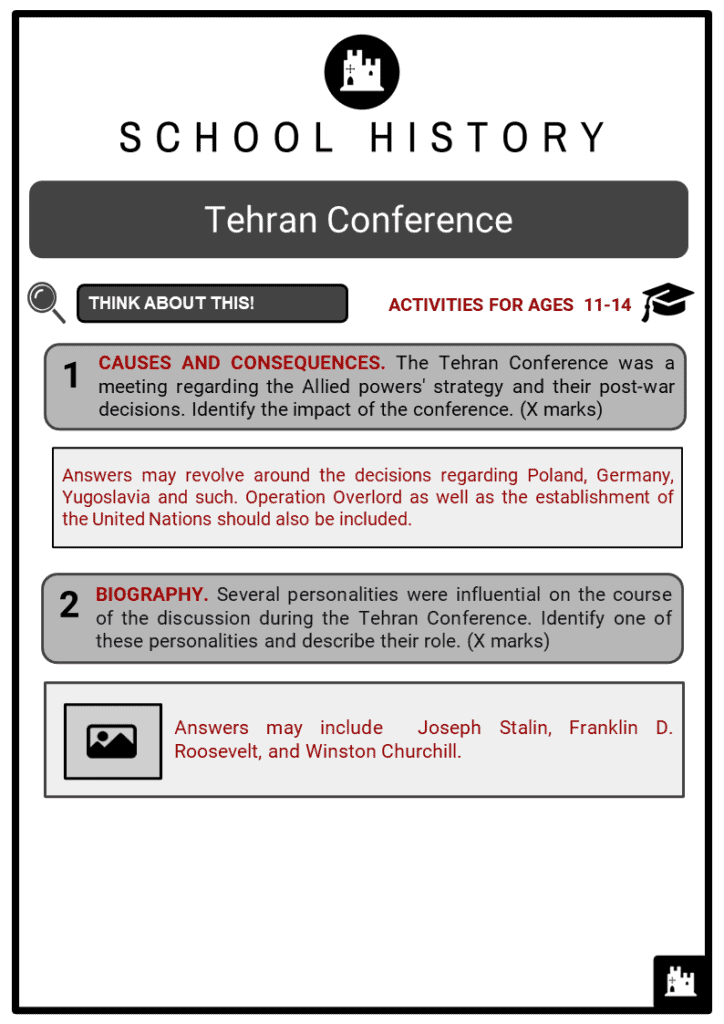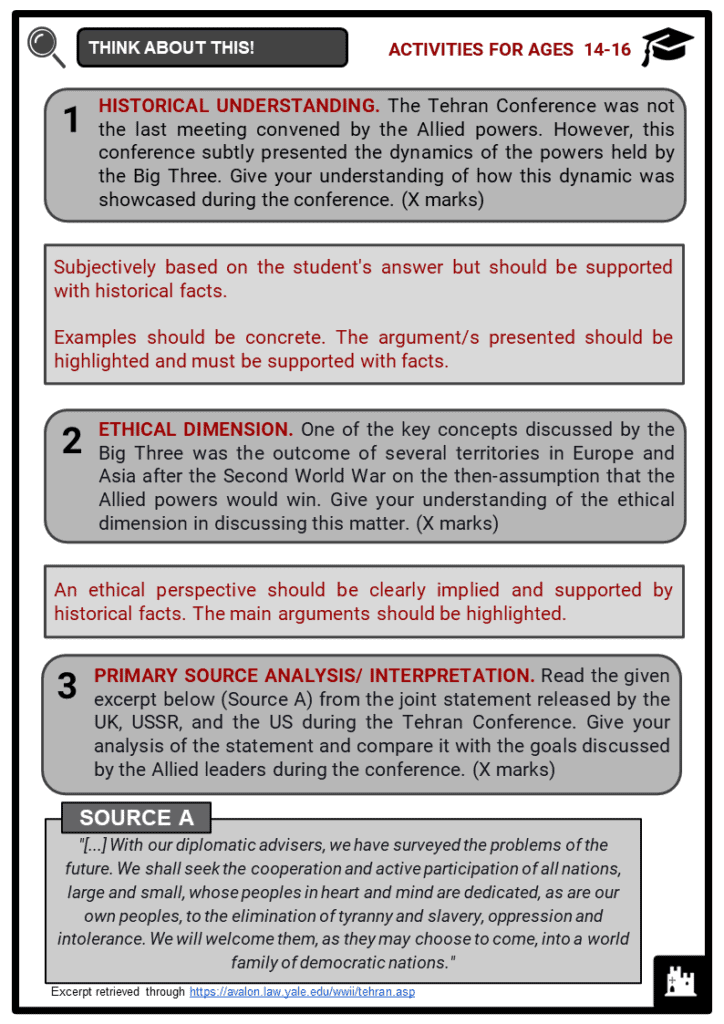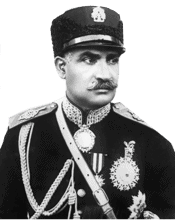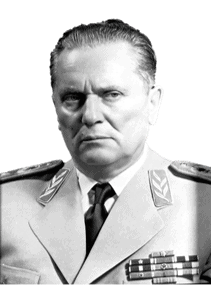Download Tehran Conference Worksheets
Do you want to save dozens of hours in time? Get your evenings and weekends back? Be able to teach Tehran Conference to your students?
Our worksheet bundle includes a fact file and printable worksheets and student activities. Perfect for both the classroom and homeschooling!
Table of Contents
Add a header to begin generating the table of contents
Summary
- The objectives of the Tehran Conference
- The main points discussed during the Tehran Conference
- The impact of the Tehran Conference
Key Facts And Information
Let’s find out more about the Tehran Conference
- The Tehran Conference took place from 28 November to 1 December 1943, during the Second World War. It was the first meeting between Churchill, Roosevelt and Stalin, the “Big Three” Allied leaders. Two important military and political decisions were made.
- The occupation of Normandy in June 1944 was discussed. Furthermore, the principle of disarming and partitioning Germany, sharing Europe in zones of influence and moving Poland to the west was discussed. Stalin and Roosevelt also rejected the British plan of an offensive by the Mediterranean and the Balkans.
Proceedings
- Churchill proposed a meeting in London. Stalin insisted on meeting in Tehran in Iran despite the distance to be travelled by Roosevelt and Churchill. Stalin, who was flying for the first time in his life, arrived first. Roosevelt and Churchill arrived from Cairo, where a conference on Japan and Asia had been held.
- At the time of the conference, Iran was occupied by Soviet and British forces. The 22-year-old Shah, Mohammad Reza Pahlavi, only had protocol power.
- The Iranian leaders were informed about the conference with only a few days’ notice. The Reza Shah was not even invited to the ceremonies that took place in the embassies.
Goals
- The main goal of the conference was to strategise how to defeat the Axis powers - Nazi Germany and Imperial Japan.
- Post-war plans were also discussed, with the assumption that the Allied powers would win.
- On a political level, Stalin accepted the principle of the creation of an international organisation proposed by Roosevelt.
- The “Big Three” agreed on the principle of the partitioning of Germany.
- The annexation of Königsberg by the Soviet Union and the displacement of Poland (whose government in exile in London was neither informed, nor consulted) to the west was also agreed on.
- The partitioning of territories allowed the USSR to keep the Polish territories obtained by the German-Soviet pact. The territories acted as (partial) compensation. Future Poland would receive the eastern territories of Germany. However, the new frontiers of Poland were not specified because the British wanted to avoid protests from the Polish government in London. Moreover, Roosevelt wanted to avoid protests from Americans of Polish origin.
- After the Conference, when leaks revealed what was considered to be a plot by the British and Americans against Stalin’s ambitions to the detriment of the Poles, Anthony Eden (in the House of Commons on December 15, 1943) and Franklin D. Roosevelt (in front of the Congress on January 11, 1944) gave false denials.
- It was envisaged that the eastern boundary could be defined by a line called “Curzon Line A”: not the true Curzon line of 1919 which left Lviv to Poland (named “B” by the Soviets). The German-Soviet route of 1939 gave this city to the USSR. As for the western border, it could follow the course of two rivers, the Oder and the Neisse (Oder-Neisse line).
- It was not specified, however, whether it was the Western Neisse (which had its source in Bohemia and flowed into the Oder near Nysa) or the Eastern Neisse (which had its source in Silesia and flowed into the Oder near Gubin), which was later to be discussed.
- Stalin also made his claims in Asia: South Sakhalin and the Kuril Islands, then Japanese territories. Concerning the operations in the occupied Balkans, Churchill announced to Stalin his intention to support communist partisans in Yugoslavia led by Tito rather than the Chetniks’ legitimist group obedient to the Yugoslav government in exile in London. The former was led by Draža Mihailović, leader of the Chetniks Detachments, a royalist and nationalist movement.
- Churchill made his decision based on reports that the Partisans inflicted much more damage on the Germans than the Chetniks. Churchill did not suspect that these reports largely exaggerated the number of dissident groups and minimised Mihailović’s forces. This was due to the influence of the “Five of Cambridge”, a group of intelligence agents in the British SIS (Secret Intelligence Service) working in fact for the NKVD (or the People's Commissariat for Internal Affairs), the interior ministry of the Soviet Union tasked to oversee Soviet prisons and labour camps.
Decisions Obtained
- After the conference, the three leaders communicated the given military conclusions, on 1 December 1943.
- Yugoslav Partisans would be supported by supplies and equipment as well as commando operations.
- Turkey should join the war, on the Allied side, before the end of the year.
- If Turkey went to war against Germany, and if it resulted in a declaration of war or an attack by Bulgaria on Turkey, the USSR would immediately go to war against Bulgaria. The Conference noted that this could be mentioned in future negotiations to bring Turkey into the war.
- The “Operation Overlord” (Normandy landings) would be launched in May 1944, in synchronisation with an operation against the south of France.
- The conference would take note later of Marshal Stalin’s statement that the Soviet forces would launch an offensive at the same time to prevent German forces from being transferred from the Eastern to the Western fronts.
- It was agreed that the troops of the three powers would remain in close contact for all matters concerning operations in Europe. In particular, a cover plan was agreed in order to mystify and disorientate the enemy.
- Churchill, Stalin and Roosevelt also agreed at this conference to create the UN according to the principles developed at the Moscow Conference. This conference would lead to the bringing together of experts.
Stories about the Tehran Conference
- The Tehran Conference, code named Eureka was the first time all three Allied leaders had convened face to face. This remarkable event produced several stories that made it controversial.
- Winston Churchill, in his memoirs, refers to the dinner given by Stalin in November, a meal during which the Soviet leader proposed to shoot thousands of German officers and technicians at the end of the war.
- According to Soviet historiography, during the second half of 1943, Otto Skorzeny’s Special Forces reportedly worked on a plan to assassinate Churchill, Roosevelt, and Stalin during the conference that was to be held in Tehran. It was known as the operation “Long Jump”.
- The project was abandoned partly because the location was too far away. Also, Berlin received a coded message from its agents in Tehran indicating that they were under surveillance and that the agents of the Soviet counterespionage had alerted the Anglo-Americans. It seemed that this story was only a Soviet invention.
The Tehran Conference: Its bitter fruits
- Poetically speaking, the year started under the promise of a harvest for the Big Three. One might ask, What did they plant in this garden? For the Tehran Conference greatly impacted the decisions made after the Second World War, even for Iran as the country’s independence was also discussed.
- Tehran had to establish a second front and coordinate military operations against the common enemy in the east and west to end the war in Europe before the end of the year.
- Tehran had to cement the United Nations unit. However, discord in the allied camp was the enemy’s main source of strength.
- Finally, during the conference, Iran's government was discussed - as quoted from the Big Three's discussion: "The Three Governments realize that the war has caused special economic difficulties for Iran, and they all agreed that they will continue to make available to the Government of Iran such economic assistance as may be possible, having regard to the heavy demands made upon them by their world-wide military operations, and to the world-wide shortage of transport, raw materials, and supplies for civilian consumption."
The beginning of the Greek tragedy
- The whirlwind of recent events had ripped the veil from Tehran and highlighted the character of the main decisions that were taken. These decisions were, above all, about military issues.
- The English had long been favourable to the opening of a second front in the Balkans, not only to preserve their communication line in the Mediterranean from traditional Russian attacks but also to prevent the Southeast flank of Europe from becoming a base for Soviet domination in Germany. A Balkanised zone of Europe focused on the dismembered Austria-Hungary empire, offered Stalin the most fertile field to the extension of the new Soviet order with the help of so-called Slavic movement “national liberation”.
- Since 1939, when England and Germany competed for the Soviet alliance that was then obtained by Hitler, the grandiose designs that nourished Stalin in the strategic area that went from the Black Sea to the Adriatic were not a secret for Churchill.
- The antagonism between Churchill and Stalin started well before Tehran. It was obvious for the two statesmen that there could be a vacuum in the centre of Europe, a Germany crushed, and the one who dominated Germany would ultimately dominate the continent. The question of the second front identified itself to this question: What Europe will we have?
Image sources:

